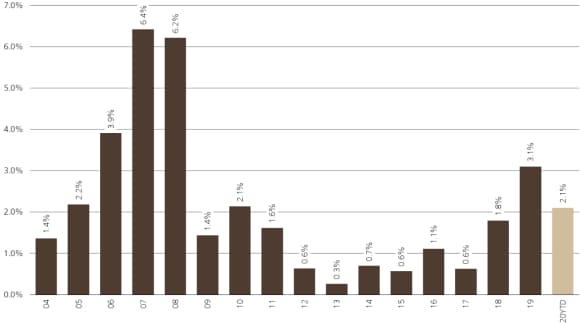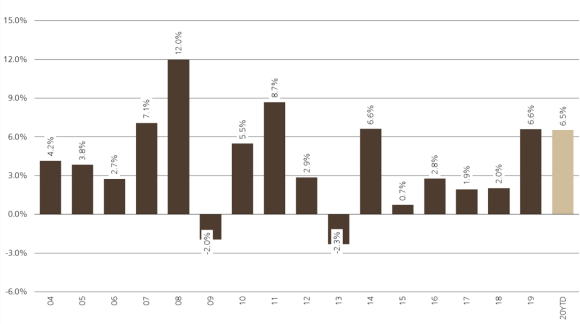Negative interest rates—a game changer?
Negative yields on government debt once existed mainly in the Eurozone and Japan, and investors expected gradual convergence towards higher US levels. Then, COVID-19 changed everything. Our investment experts discuss what may come next.
Until earlier this year, negative yields on government debt existed mainly in the Eurozone and Japan, and investors expected a gradual convergence towards higher US levels. Then, the emergence of COVID-19 changed the narrative. Our investment experts discuss what may come next.
Key webinar takeaways
Key webinar takeaways
- In mid-2016, around the 60% of Eurozone government bonds had a negative yield, and investors searching for yield counted on global interest rates eventually converging towards the higher level of the US.
- The 2020 COVID-19 crisis has shaken that view, and now many see an opposite trend developing: of US rates converging toward the zero range prevailing in Europe and Japan.
- Market analysts put the probability of negative rates at just over 40% for the US, and nearly 50% in the United Kingdom over the next year.
- Investors are looking for ways to meet this challenge
A short history of negative-yielding debt
A short history of negative-yielding debt


Massimiliano Castelli
Massimiliano Castelli

Until 2015, negative yielding bonds were relatively rare. Then, starting in Europe, global negative-yielding debt shot up from less than USD 3 trillion in 2015 to over USD 12 trillion in 2016. In mid-2016, around 60% of Eurozone government bonds already had a negative yield! Over the next year or two, yields slowly recovered and the total amount of negative-yielding debt globally sunk to slightly over USD 6 trillion by mid-2018. But the rise in yields was relatively short-lived. By mid-2019 – one year later – central banks around the world once gain engaged in unprecedented monetary easing and negative yielding debt ballooned to USD 15 trillion. This is equivalent to about one quarter of the total government bond market with around 70% of Eurozone government debt affected.
The US was still somehow an exception, and markets generally expected that over time, global interest rates would ultimately converge again towards the higher levels of the US. In early 2020, COVID-19 hit the global economy and instead it was US rates that converged towards the zero bound range already prevailing in Europe and Japan.
The pandemic has affected fixed income markets in a number of ways:
- At the beginning of the pandemic, negative yielding debt nearly disappeared. For example, while Europe still had negative-yielding corporate bonds worth over one trillion in February 2020, by March, the pool of negative-yielding investment-grade corporate debt in the Eurozone practically disappeared due to rising spreads.
- Negative yielding government debt in the Eurozone also decreased in the light of extensive fiscal stimulus packages. Globally, the pool of negative yielding debt declined to around USD 12 trillion in May 2020 from over USD 14 trillion in February.
- With major central banks now backstopping virtually all types of investment-grade debt, negative-yielding debt is expected to increase again, even though sovereigns are issuing record amounts of paper, and corporates are using central bank support to refinance large amounts of debt.
Huw van Steenis
Huw van Steenis

The specter of negative rates is looming for the Anglo Saxon economies. Roughly half of G10 economies have cut policy rates below zero. The UK has sold three-year debt at a negative yield for the first time. But given the span of the pandemic's shock, more countries will follow suit.
The probability of negative rates for the following year is considered to be just over 40% for the US, and nearly 50% for the United Kingdom. The Bank of England has said policy rates below zero are under active review, as is also the case in New Zealand and Australia. In the US, the market is starting to price in this possibility from next year. Whilst in our base case we do not expect more central banks to go negative, we thought worth exploring the investment implications. A move below zero would be an unwelcome and unnecessary experiment for markets, for three reasons.
Make an inquiry
Fill in an inquiry form and leave your details – we’ll be back in touch.
Introducing our leadership team
Meet the members of the team responsible for UBS Asset Management’s strategic direction.



